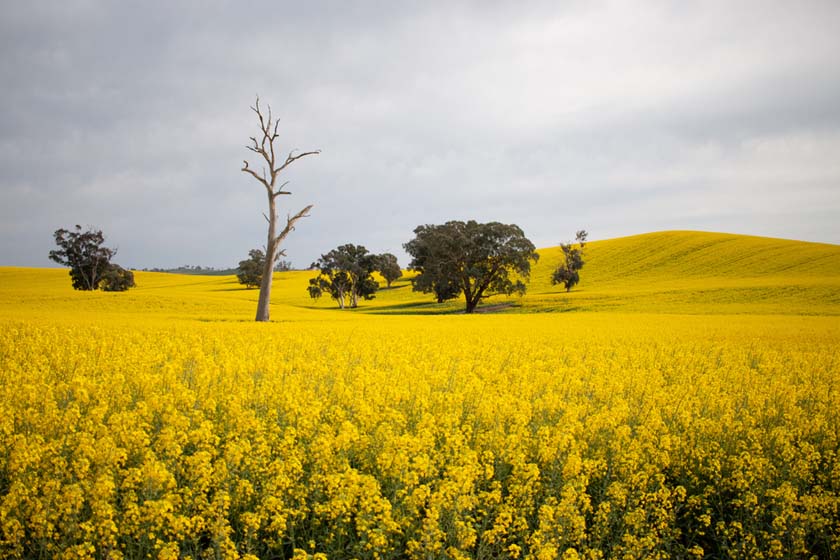Cootamundra, NSW
Cootamundra has an elevation of 318m.
Cootamundra is centrally located geographically in the South West Slopes of New South Wales – between Sydney, Melbourne and Adelaide. It is less than two hours drive from Canberra.
Cootamundra is a corruption of the Aboriginal word “Gooramundra” meaning turtles, swamp or low-lying.
Cootamundra is home of the Cootamundra Wattle Acacia Baileyana which is probably the best known of all cultivated acacias. The Cootamundra Wattle is naturally restricted to the South Western Slopes of New South Wales and it is cultivated widely both in Australia and overseas.
The Wattle Time Festival is held during the month of August each year.”Wattle Valley” on the Berthong Road, north of Cootamundra is a natural area where the wattles grow.
Sir Donald Bradman was born at 89 Adams Street Cootamundra, (then a small private hospital) and lived at Yeo Yeo for the first few years of his life.
Cootamundra was first settled in the 1830’s. The town was built on what was originally a stock station called “Cootamondra” owned by pioneer, John Hurley.
By the 1860’s settlement about the station had increased to such an extent that a certain amount of town planning was necessary. The town was surveyed as the “village of Cootamundry” and the plan was approved in 1861. Cootamundra and district have always produced good beef, lamb, wool and rich crops of grain. Cootamundra has always maintained an affinity with days gone by. Many of the older buildings remain, and are being sensitively restored, while in Cootamundra’s Cooper St a whole avenue of century-old elm trees have been heritage listed.
Since it’s earliest days, the Cootamundra district has enjoyed prosperity from its natural environment, which even today supports a diverse mix of agricultural pursuits.
The railway came through in 1877 encouraging the further growth of pastoral and related industries.
Perhaps most famous as birthplace of Sir Donald Bradman – Australia’s greatest cricketer – Cootamundra in the Riverina is most abloom in July and August when the wattle which bears its name comes into full flower.
A relaxed corner of the world. The splendours of country living are all around with gracious old homesteads, winding country lanes, farmyard animals and the abundance of fresh products. The conveniences of city living are also present in Cootamundra, with a la carte restaurants, modern cafes, live theatre and music, a range of events and exhibitions.
Nearest Airport: Cootamundra 2 kilometers
Where to stay?
Popular Activities
- Golfing
About Cootamundra
- Locality: Urban locality
- Cootamundra Postcode: 2590
- State: New South Wales
- Region: Country NSW
- Latitude: -34.63909
- Longitude: 148.02467
- Elevation: 330m
- Population: 6782
- Median Income: $27144
- Area (Sq/km): 888.401
- Timezone: Australia/Sydney
Accommodation In Cootamundra
Discover some of the accommodation in and around Cootamundra


